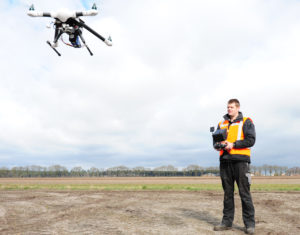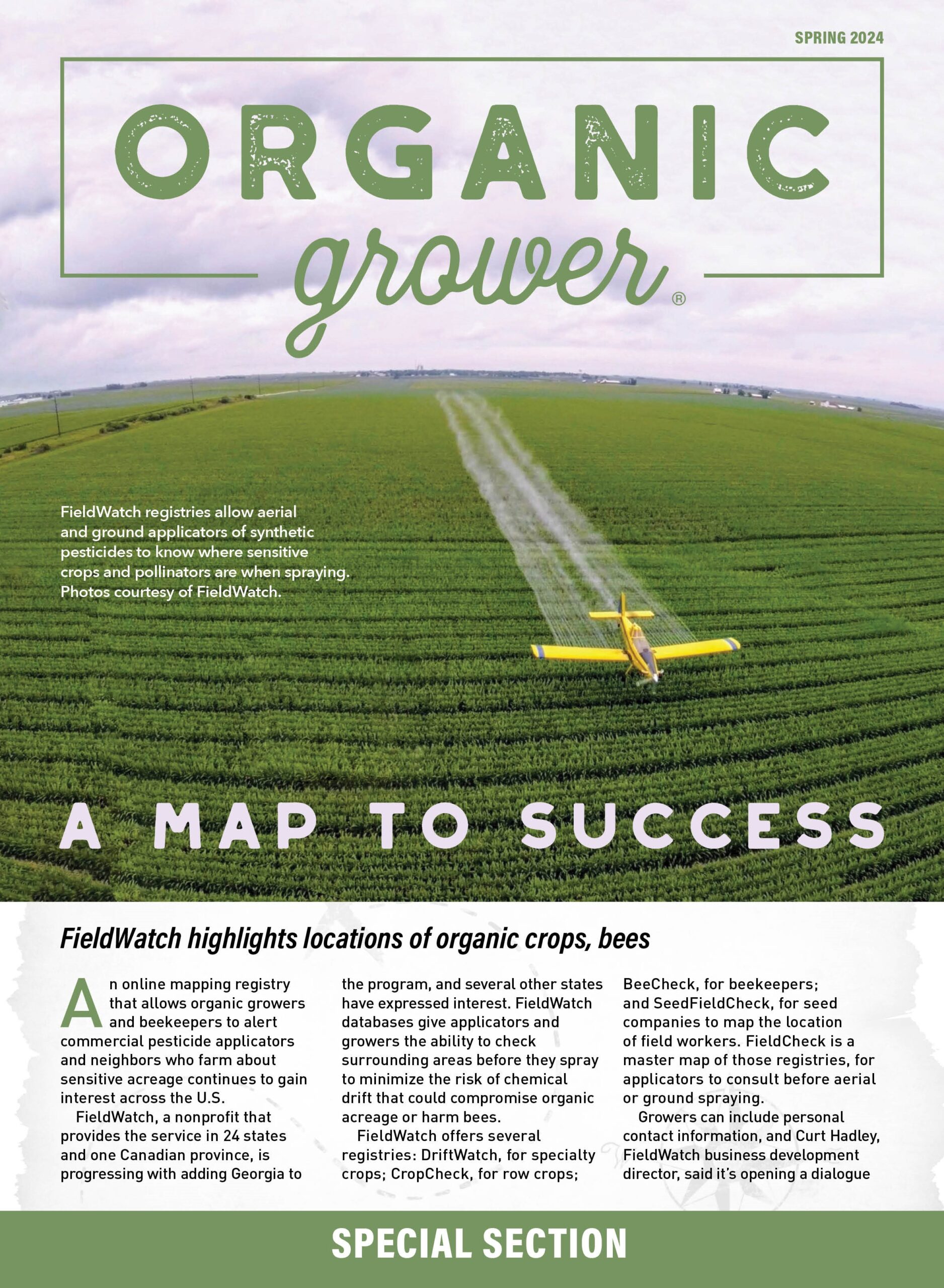Apr 18, 2018
Dutch grower improves yields by 1 percent each year using precision ag
It’s been 11 years since Dutch potato grower Jacob van den Borne took over the family farm with his brother Jan. At the time they decided that they didn’t want to grow bigger, they wanted to grow more.
Together they started adopting precision agriculture technology, including RTK guidance and GPS section control on their sprayer. They have since seen yield improvements of about 1 percent per year. Van den Borne attributes the improvements to careful mapping and accurate prescription. Today they are global leaders in precision agriculture in potato production, and Van den Borne is highly sought after to speak and train growers on his innovative system.
Together with his brother, Van den Borne runs a farm near the village of Reusel on the border of Belgium. He grows french fry potatoes for McDonald’s and KFC. He grows on nearly 500 hectares (1,235 acres), 80 percent in Belgium and 20 percent in the Netherlands. The farmland sits on sandy soil with low soil organic matter, and suffers from compaction issues and variability. Fertility, nematodes and disease are also a problem.

approach to farming.
Van den Borne believes the key to addressing these issues lies in precision agriculture, and it has proven to be successful. When he took over the family farm, yields averaged 45-46 tons per hectare (18.2-18.6 tons per acre). Today, his yields are at 53-54 tons per hectare (21.4-21.8 tons per acre).
In 2009, in order to get a better understanding of the land he was farming, Van den Borne started using RTK guidance. The investment paid off almost immediately. One of the challenges of farming in Europe is small field size. The average field is just three hectares and has six corners. It might not seem like an important detail, but before GPS it meant a lot of overlap in hours, fuel and seed.
“We reduced that overlap from 13 percent to just 1 percent,” he said. “And that paid off our initial investment of all the expensive stuff in three years.”
Then he invested in a crop sensor because he didn’t know the history of the individual fields he rented. The first thing he noticed was a lot of variation, which triggered him to start yield mapping. There wasn’t a map available, so he made one himself called Yield Master Pro, owned by a company called Precision Makers.

“We found that there’s three times more yield on the good spots than there is on the bad spots,” he said. “When the variation is that big then you also know that the opportunities are even bigger.”
While the savings were huge, Van den Borne knew there were further improvements to be made. Precision agriculture, he said, is about doing the right thing at the right time at the right location. Essentially, he no longer wanted to use prescriptive practices, such as fertilizers and crop protection products, to protect yields. He wanted to improve the weak spots. In order to do this he figured he needed to understand accuracy at the field, farm, zone and plant levels.
When a farmer expresses interest in adopting precision agriculture, Van den Borne advises them to buy a yield monitor.
“The most important data set for a precision farmer is their yield potential map,” he said. “That’s not the same as a yield map.”
A lot of data goes into making a yield potential map, including soil maps and weather data. Van den Borne uses soil conductivity sensors from Canada (Dual EM) to measure what he calls the “battery capacity” of his soil. Quickly he found a high correlation between yield potential and soil conductivity.
“The higher the battery capacity of the soil, the more yield potential you will have if you charge your battery right with water, nutrients and air,” he said.
He uses tile drainage and ditches to control water in the lower fields and irrigates the drier parts. Although the soil is fairly high in organic matter, it needs to be fertilized every year. Van den Borne uses manure to do this. He knows that applying manure cannot be considered precision agriculture, but he really doesn’t have a choice. Because cattle and hog farmers own the fields he rents once every four years, he has to use the manure. In his fields, Van den Borne uses green crops, like winter wheat, to build soil organic matter.
This year, he bought his first manure sensor so he knows precisely what he’s applying to the field. The only chemical fertilizers he applies are nitrogen and potassium. To limit soil compaction, he uses controlled traffic.
Once all the data is captured, Van den Borne makes decisions regarding which varieties and seed sizes go where, and which fields to plant first and which to plant last. “Twenty-five percent of yield potential is in the seed,” he said.
To achieve even emergence, Van den Borne has the growers who produce their seed resize the seeds, and then he plants them at the right depth. When planting season starts he has about 60 trailers of seeds. Every trailer’s seed is measured and for each Van den Borne knows what distance they will be planted at.
“Then we use the in-field variability to variable rate those calculated planting distances,” he said. “So we have the calculation sprouting tests, sizing and starch levels, and then we vary from our basic setting (which is 33 cm) by using conductivity maps and shadow maps.”
Nematodes can be a problem, but Van den Borne prefers to use green crops, not chemicals, to control them. Chemicals are only used in low conductivity zones. Irrigation is also a challenge. While growers are still allowed to irrigate in Belgium and the Netherlands, every year is a struggle. He’s currently looking into variable rate irrigation, but hasn’t found a solution that works well as of yet.
After planting, Van den Borne will spray for weeds, but use weed maps to variable rate spray. He also sprays for diseases, mainly early blight. They use 18 wireless sensors placed in the soil and three main weather stations to predict when the disease could strike. “We only spray our crops just before that disease will strike,” he said.
At harvest, Van den Borne collects as much data as possible, but most importantly yield data. They’re working on installing a camera on the harvester to determine quality parameters, such as length, size and starch levels. Using that quality data, he hopes to one day sell extra large french fries from McDonald’s made especially on his farm.
Van den Borne spends 120 days growing potatoes, but the potatoes can spend 200 days in storage. Potatoes are stored in bulk on ventilated floors. To mitigate losses, he helped develop a yield loss measuring system, which is now sold by Tolsma.
“Then the circle is closed and we use all of the information again for next year,” Van den Borne said.






